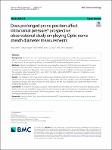Item Infomation
Full metadata record
| DC Field | Value | Language |
|---|---|---|
| dc.contributor.author | Ufuk, Demir | - |
| dc.contributor.author | Öztürk, Taşkın | - |
| dc.contributor.author | Ayşe, Yılmaz | - |
| dc.date.accessioned | 2023-03-16T04:17:33Z | - |
| dc.date.available | 2023-03-16T04:17:33Z | - |
| dc.date.issued | 2023 | - |
| dc.identifier.uri | https://link.springer.com/article/10.1186/s12871-023-02037-9 | - |
| dc.identifier.uri | https://dlib.phenikaa-uni.edu.vn/handle/PNK/6907 | - |
| dc.description | CC BY | - |
| dc.description.abstract | Although invasive methods (intraventricular and intraparenchymal monitors) are still the gold standard in the diagnosis and follow-up of increased ICP, these approaches may cause major complications, such as hemorrhage and infection [8]. Non-invasive alternative methods recommended for the assessment of ICP include the following: measurement of changes in cranial computed tomography (CT) and brain magnetic resonance imaging (MRI), transcranial doppler, tympanic membrane displacement, intraocular pressure, venous ophthalmodynamometry and ONSD [8]. | vi |
| dc.language.iso | en | vi |
| dc.publisher | Springer | vi |
| dc.subject | hemorrhage and infection | - |
| dc.subject | increased ICP | - |
| dc.title | Does prolonged prone position affect intracranial pressure? prospective observational study employing Optic nerve sheath diameter measurements | vi |
| dc.type | Book | vi |
| Appears in Collections | ||
| OER- Y học- Điều dưỡng | ||
Files in This Item:

